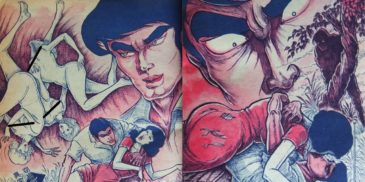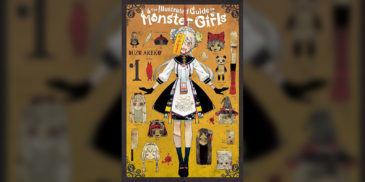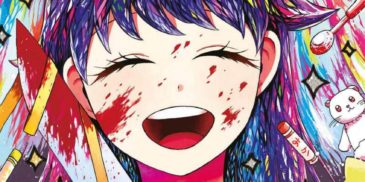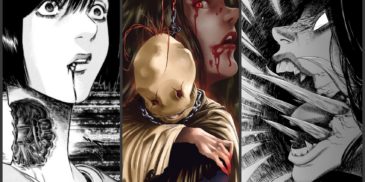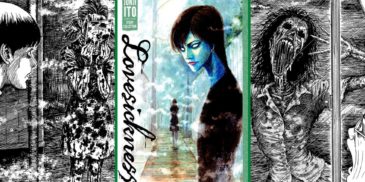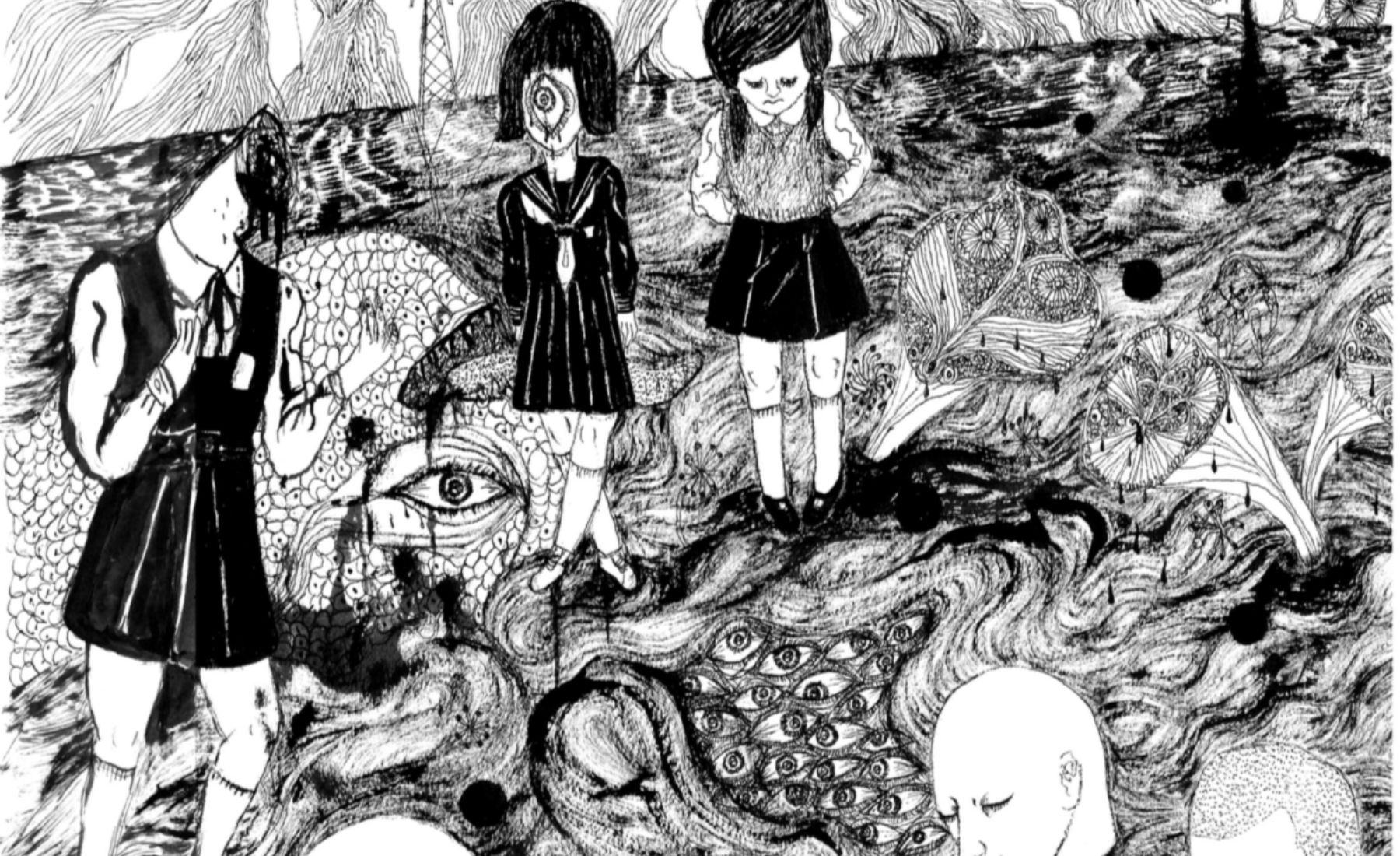
“Daisuke Ichiba is not a manga artist, he is a drawer of beautiful women!”
There are few Japanese underground creators that can hold sway over a select few and never pierce into the larger collective. Certainly, the likes of Suehiro Marou, Shintaro Kago, and (digging even deeper) Kazuichi Hanawa have become notable names with manga fans who find interest in the extremes – notably, erotic grotesque nonsense. However, Ichiba stays a fringe among the obscure unknown to many outside of a dedicated fan base. Arguably, because Ichiba is, in fact, “not a manga artist”. This self-proclamation, which reflects favouritism on art over narrative works, has led to the creator’s ‘manga’ staying in the obscure, completely inaccessible to Western readers as a result. Thankfully, the deviants over at Hollow Press have seen fit to release this title (along with his previous work “The Life of Namazuko“), showing Ichiba is a unique and profound talent worthy of further exploration.

The story of KSKHH is hard to piece together or formulate into a general summary. Instead, what the reader will get is a splattering of ideas and characters who are similarly bound by an obsession with sex and radical ideologies. Conversely, some characters exist to reflect a general stupidity and naivety that allows such extreme personalities to climb into places of control where they can exploit other. For example, the young warehouse worker whose insultingly simple views on love become a constant joke and her simplicity ripe for exploitation. Admittedly, the work has an easy yet effective tell: as the more mundane or idiotic a character is, the more cruelly they are drawn. For example, the office worker presented in an obnoxious and loud style that reflects her (lackof) persona.
However, the lack of cohesive narrative and extreme personas doesn’t besmirch the validity of Ichiba’s narrative. Text is engaging, delivered in an assured and boisterous manner that makes the controversial nature of the text almost poetic in flow – there are many reflections that will give readers pause to interpret. Simultaneously, Ichiba is not afraid to divulge into crass humor that is equal parts uncomfortable and hilarious. A rather morbid example comes from a fictional persona that Ichiba introduces to teach the readers how to write manga. This lecherous man happens to have a young ward under his wing which becomes the subject of venting frustrations, both verbally and physically. Disturbing? certainly, but Ichiba’s embrace of all manner of taboos’ comes with a playful wit that ensures it is not just shock value for the sake of eliciting a visceral reaction from his audience.
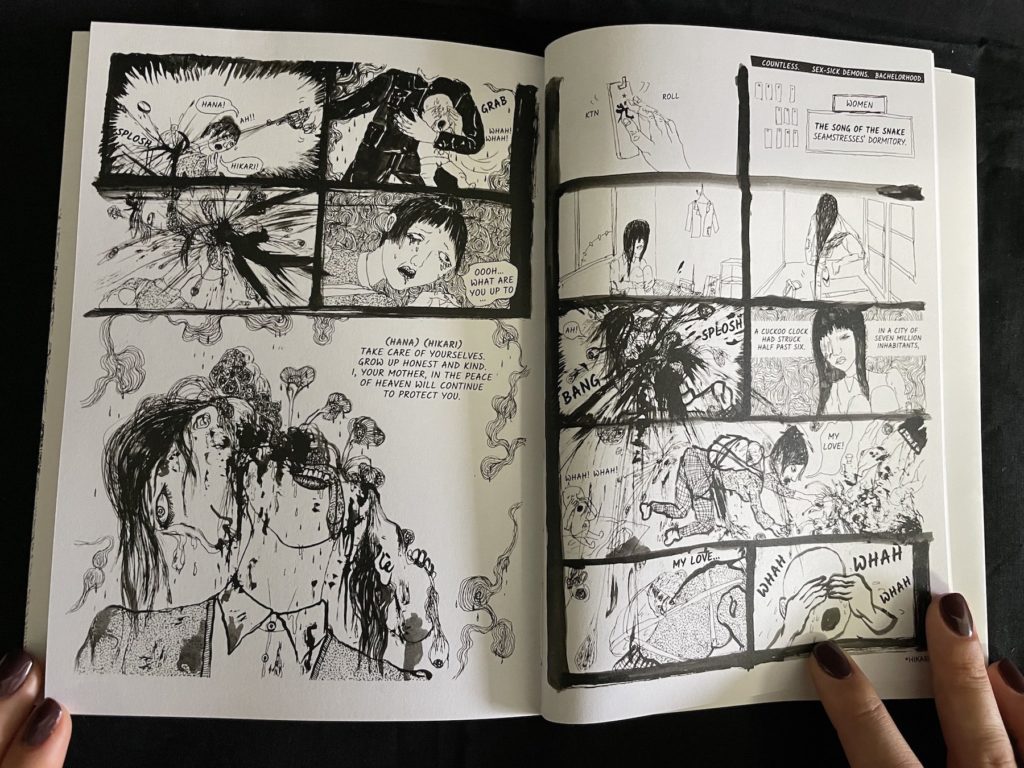
It is easy to see the nature of the disturbing content– the unabashed way sexual violence and manipulation exists within the world portrayed by the artist– and how such sentiments have kept him forever bound to the underground. Certainly, the book contains all manner of perversion, including assault and self-mutilation, presented to push a serious narrative as well as in jest of accepted norms. As previously mentioned, the delivery in which Ichiba approaches such subject matter is as an absurdist who punctuates his point with offensive material as opposed to making these extremes the driving force of his work. Arguably, defining the work by its extremities, either good or bad, would be an overtly simplistic interpretation.
Taking a step back from trying to define the chaotic narrative structure of the work, the undeniably greatest draw to KSKHH lies in the art. A strongly clear, defined vision of female sexuality/divinity, combined with a crude and frenzied approach, makes for a beautifully disorienting aesthetic. In addition, Ichiba uses the collage approach of taking photos and kanji to frame the images – the pages of the book are awash with a disturbingly fascinating visual presence that keeps the eyes lingering on the page – the amount of detail can be stunning. The book gives the sensation of a guided chaos as concrete forms are surrounded by an abundance of textures that has the reader explore both in equal measure. In addition, the arts focal point often rests in Ichiba’s celebration of the female form to give a perverse sense of beauty surrounded by filth. Arguably, the mangaka’s work can be defined as a series of sharp contrasts in visual mediums and a narrative that is open to interpretation of the reader.
Having the physical work of Ichiba in print is an utterly unique way to experience his work, seeing it in print, versus online, exemplifies the amount of detail put into each illustration. Positively, the title landed in the hands of Hollow Press, their releases always stunning. In particular, their willingness to experiment with format has resulted in releases that are meant to be cherished and displayed (La Gameti by David Genchi being one particular title I come back to over an over again). KSKHH, unsurprisingly, upholds the high quality standard of print to be expected, including a gorgeous glossy cover with removable dust jacket (soft cover edition). Furthermore, the translation work on this title reads and flows in a way that is easy to follow, an impressive given how busy the panels can get.
KSKHH is an impressive release, a true look into the beauty of Japanese underground publishing. Fans of alternative and experimental manga owe it to themselves to dive deep into the depraved and beautiful visions of Ichiba. However, the previously released The Life of Namazako represents a more complete realization of the artists work and offers a slightly more cohesive narrative. That title is easily a five star release, and KSKHH only suffers from being the second release and falling slightly short of the previous. Essentially, if you can only acquire one title, start with The Like of Namazako, though I would easily recommend grabbing both.
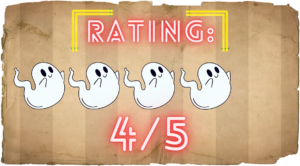
Check out the Hollow Press official Site for More Titles
Visit Daisuke Ichiba’s official site

More Manga Reviews
Noboru Yoshimi was a prolific horror manga author who enjoyed great success with over 300 published stories to his name, mainly aimed at a younger audience. There is however one… The Illustrated Guide to Monster Girls is a 4-volume, light-hearted horror/slice-of-life manga, written and illustrated by Suzu Akeko. A prolific manga creator, she has previously written and illustrated Nightmare Eater,… How can one not be drawn in by the vague title and a colorful cover art showing a smiling girl surrounded by blood alongside cute items? Honestly, sometimes it is… Pygmalion is a gory horror manga consisting of three volumes released in 2015 and concluding in 2017, written and illustrated by Chihiro Watanabe. Watanabe is known as the creator of… The vampire sub-genre in the West is one that is marked dull media with the odd standout title slipping through – the creatures seldom seeing reinvention or popularity of their… Junji Ito’s at it again with the suicide-filled creepfest that is the Lovesickness collection, and like all of his work, it is worthy of a manga review. Taking its name…Indecent Wriggling (1970) Manga Analysis – A Perverse Gender-Bending Body Horror
The Illustrated Guide to Monster Girls: Vol. 1 Manga Review – Kawaii Horror
Children Manga Review – The Horror of Broken Youth
Pygmalion (2015) Manga Review – It’s All Greek To Me
Shiga Hime Manga Review – Gore Soaked Vampiric Horror
Junji Ito Lovesickness Manga Collection Review
